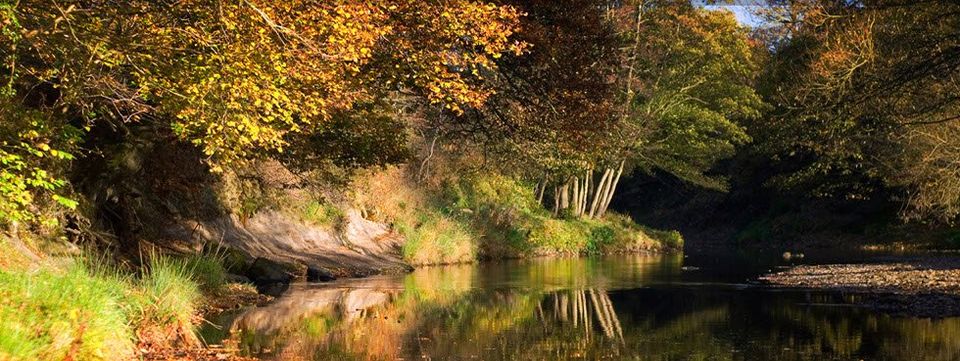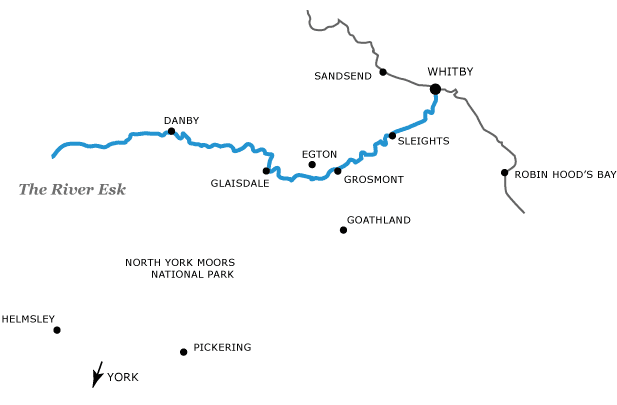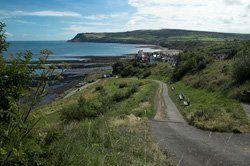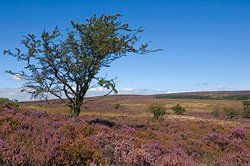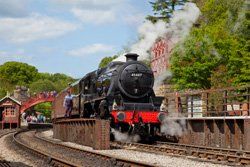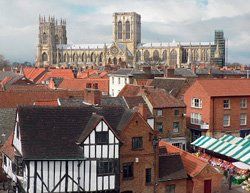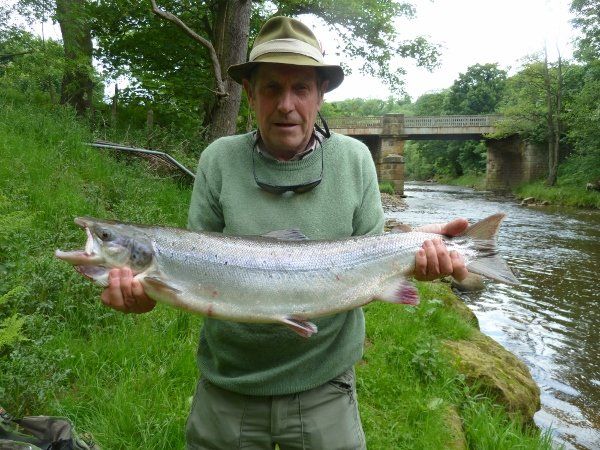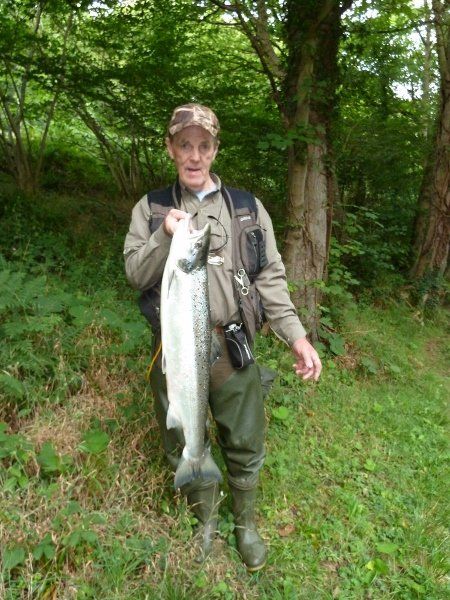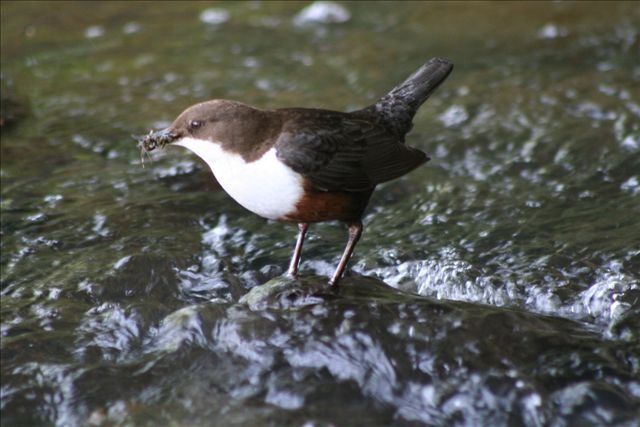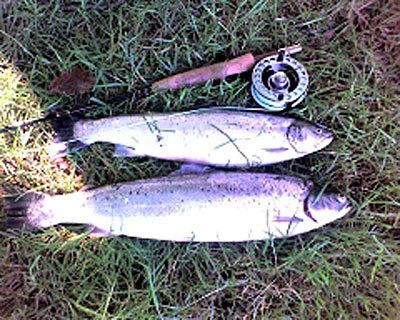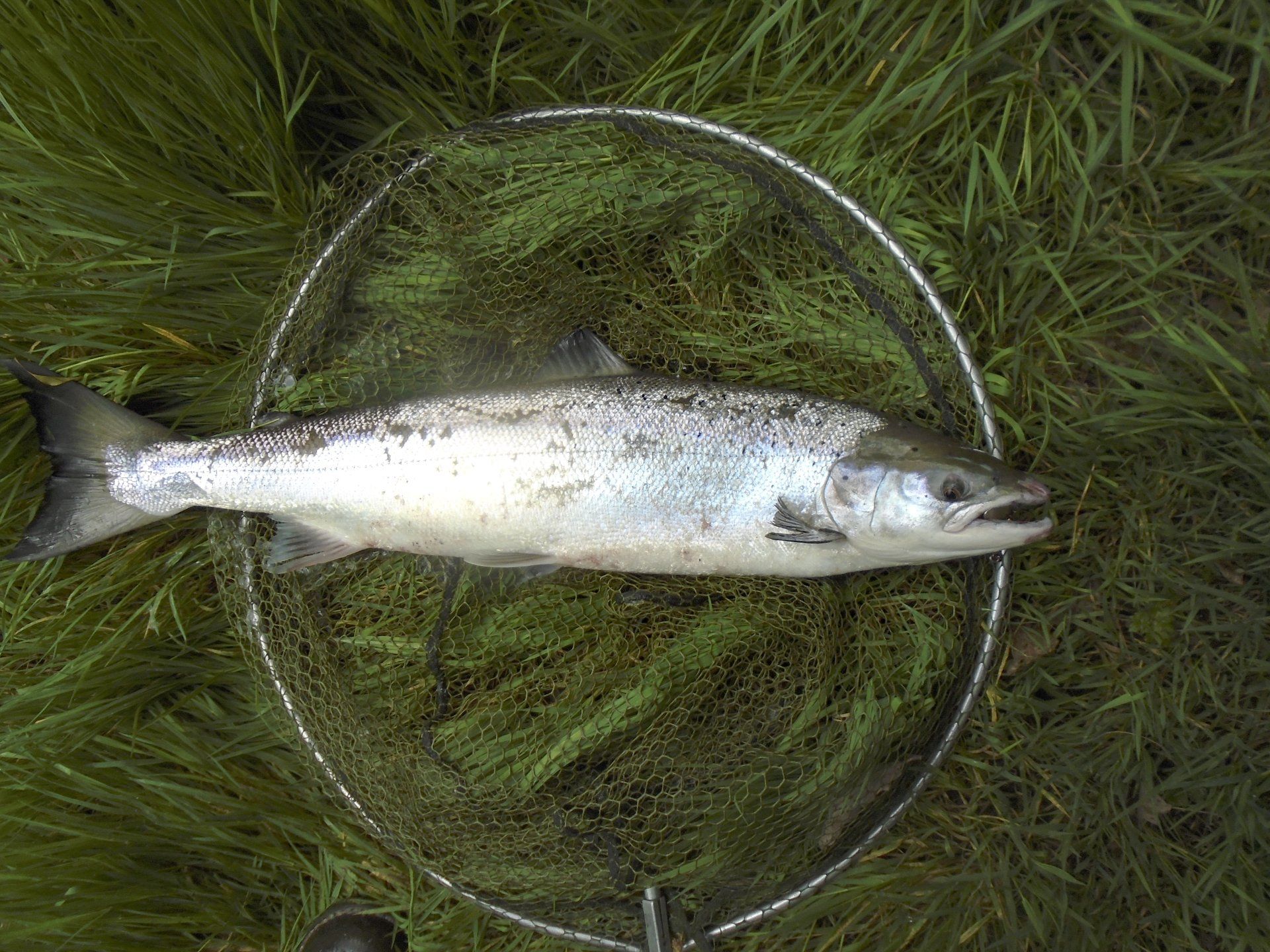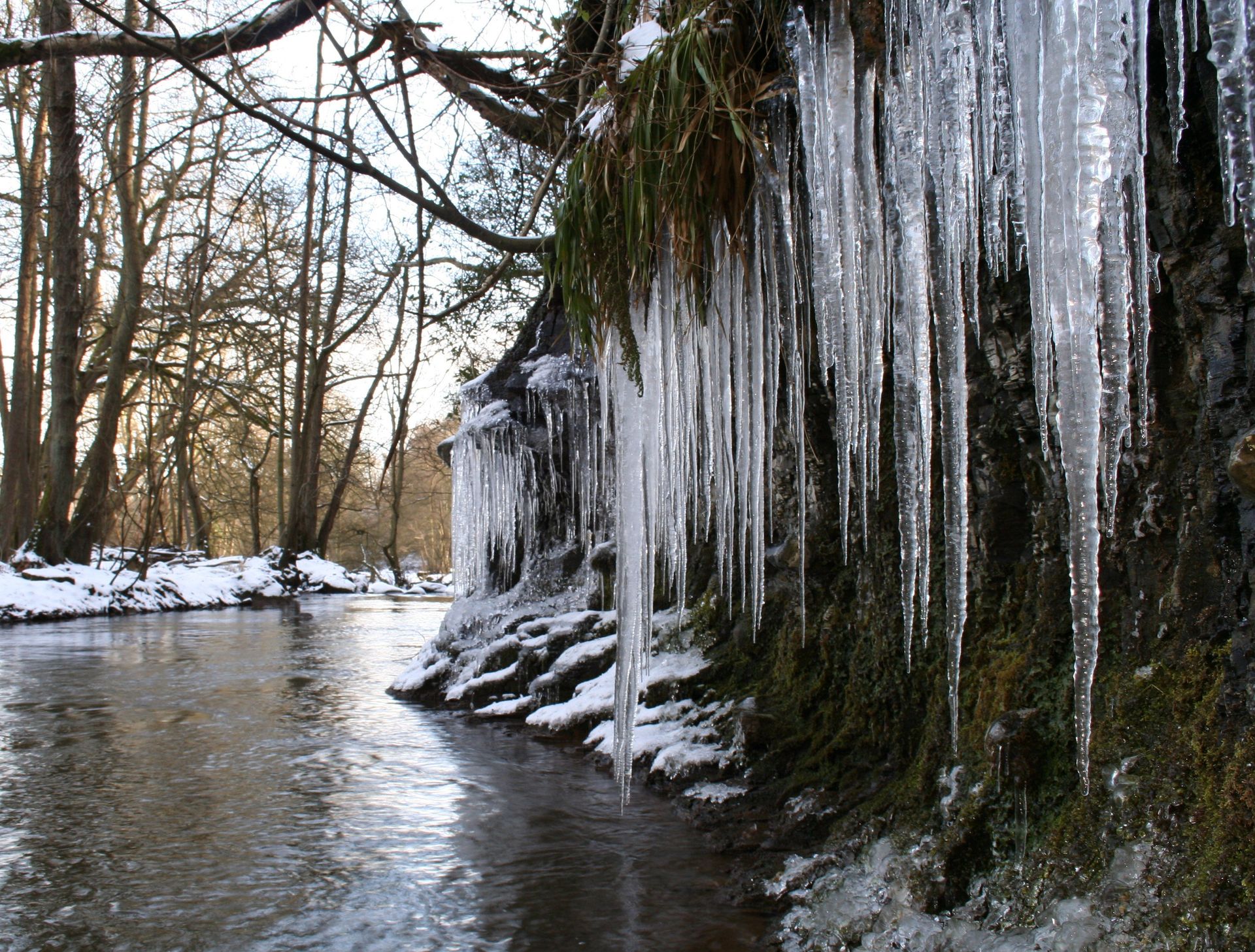GROSMONT
Grosmont was originally called Grandimont, taking its name from a small priory founded about 1200 which once stood near the north bank of the Esk, but unlike the ironworks (see below), the priory has left no visible sign of its existence. Uncertain too is the exact position of the ford where the Roman road from the south crossed the river. However, some notable relics of a far earlier period still remain on the moor about a mile to the east. The weathered monoliths known as the High Bride Stones form a line of five standing and many fallen stones, in close company with the great tumuli marking another ancient route. A second group, the Low Bride Stones, stand on a terrace at a lower level, making a rather confused pattern of smaller standing stones. The meaning and purpose of these prehistoric relics is a matter for the experts, but at least they bear witness to the immense time span of human occupation in this corner of Yorkshire.
During the early part of the 19th century Grosmont became an important centre for the mining and smelting of iron ore. The industry has long since ceased and the furnaces have been demolished but the waste lands still remain between the river and the railway station. Quarries and clay-pits for brickmaking have also contributed to local employment so that Grosmont still carries the unmistakable brand of its industrial past.
In 1835, the Whitby and Pickering Railway, one of the earliest in Yorkshire, was completed between Whitby and Grosmont and soon extended to Pickering. In 1865 the Esk Valley branch arrived to make a junction at Grosmont. This line had started as the North Yorkshire and Cleveland Railway in 1854 and had reached Kildale three years later. The North Eastern Railway Company then took it over and extended it further by leisurely stages until its eventual link-up at Grosmont produced a through route between Teesside and Whitby.
Grosmont became a relatively important junction, and the station was quite a hive of industry in the ensuing years. With the coming of the motor vehicle and the subsequent decline of railways nationwide, the traffic through Grosmont Station became less and less, until finally in 1965, the notorious Dr. Beeching wielded his axe, and the link to York was broken.
On 3rd June 1967 a group of railway enthusiasts banded together to form the North Yorkshire Moors Railway with a view to re-opening the line from Grosmont to Pickering. This objective has been achieved and during the Spring and Summer months there is great activity. Tourists come from all over the country to enjoy what must be one of the most beautiful stretches of railway country in the world.
PICKERING
Pickering is at the centre of Ryedale, in North Yorkshire. It’s the mid-point between four major Yorkshire towns Scarborough, Whitby, Helmsley and Malton. Pickering is well known as the southern terminus of the North Yorkshire Moors Railway and ‘Gateway to the Moors’. It is reputed to be one of the oldest towns in the area dating back to 270BC when founded by Peredurus – King of the Brigantes. The skyline of Pickering is dominated by the magnificent spire of the Church of St Peter and St Paul of Pickering, which contains some remarkable 15th century murals. Whilst hidden high above the town, the ruins of Pickering Castle
harbour a rich royal history.
WHITBY
Whitby’s
skyline is dominated by the ruins of St. Hilda’s Abbey, high on Whitby’s East Cliff. Spreading below Whitby, a maze of alleyways and narrow streets run down to the busy quayside.
From the old town of Whitby, 199 steps lead up to the parish church of St. Mary, whose churchyard on Whitby’s East Cliff gave Bram Stoker the inspiration to write his world famous book, Dracula.
Whitby has produced its own famous sons. Among these are Captain James Cook, the 18th century explorer and voyager who had set sail in the Bark Endeavour from Whitby, the outstanding father and son whaling masters of the Scoresby family and pioneer photographer, Frank Meadow Sutcliffe.
YORK
York
is one of England’s most popular Historic Cities and York Minster
is the largest Gothic Cathedral in Northern Europe. York City Centre is contained inside large compact walls, gates are provided for entrance to the city. Within these walls there are Georgian, Medieval and Victorian streets, nearly all the shops in these streets are set in one of the above themes. York has kept almost all of its ancient features this is one of the reasons it is so popular. As a result of its popularity there are plenty of facilities for visitors to York. Most sites have guides in several languages, there is a good range of shopping and there are lots of sources of information and organisers of day trips in the surrounding region. Naturally there are also a range of good quality hotels in York.
York has over 2,000 years worth of history inside its walls. York has many attractions all from different stages of the past, and this is why visitors return time and time again because there is so much to see and do that it can not all be done in one visit.
THE GREAT OUTDOORS
There are also some great houses, ruins and gardens to visit like:
